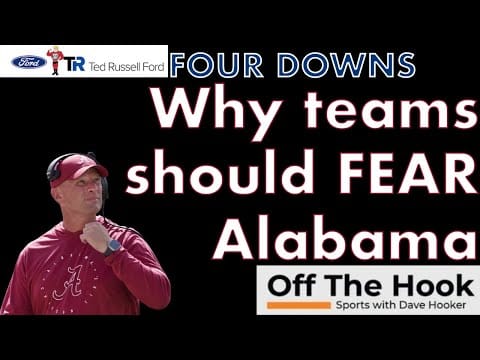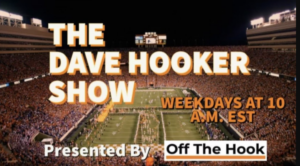When it comes to Tennessee tailback Dylan Sampson, some moderation would be wise despite the latest showcase of his very unique skillset.
Sampson was nearly impossible to stop against Kentucky on Saturday as he used every move in the book to allude, evade and run over the Wildcats. The sophomore rushed for 75 yards on 17 carries and caught four passes for 39 yards. So why not start Sampson, play him more and reap the benefits? Well, it’s not quite that easy.
First, Sampson is listed at just 5-foot-11 and 190 pounds so durability would be a concern if he were to ever touch the ball much more than he did so against the Cats. Second, Sampson benefitted from a Kentucky defense that had been worn down by the Vols’ rushing attack, which was initially led by running back Jaylen Wright, who ran for 120 yards on 11 carries earlier in the game. Lastly, with two other productive tailbacks like Wright and Jabari Small, there’s no reason the Vols wouldn’t want a fresh tailback in the game, especially one with quick feet like Sampson against a beleaguered defense.
Sampson’s contributions have been significant and should only continue to grow, as long as Tennessee’s coaches don’t forget that he’s on the roster, which seemed to be the case in a loss to Florida. Sampson’s skills are akin to two Tennessee running backs that are considered two of the better smallish tailbacks during their time in college football.
Let’s start with Travis Stephens, who played for the Vols from 1997 to 2001. He, like Sampson, was a nifty tailback who had the wiggle to make defenders miss. However, he wasn’t the primary tailback until Jamal Lewis and Travis Henry moved onto the NFL. Stephens proved to be an every-down running back in 2001 when he was forced to do so. However, his speed and quickness was best suited to outfox opposing defenses after Lewis and Henry had beaten on them earlier in the game.
Then there’s Alvin Kamara, who also possessed an innate elusiveness that was hard to stop after starter Jalen Hurd had worn down opposing defenses. Now, let’s be clear. Kamara should have been used more by former Tennessee coach Butch Jones, but that’s a totally different topic. Let’s stick to what the three tailbacks actually did during their Tennessee tenure.
Stephens averaged 4.8-yards per carry while at Tennessee, as well as 7.4 yards per pass reception during a time in which running backs weren’t as involved in the passing game as they are now. Kamara averaged 5.7 yards per carry in his final season at Tennessee in 2016 and a whopping 9.8 yards per pass reception. How does Sampson stack up? Not bad at all. Quite well in fact.
Sampson is averaging 5.7 yards per carry this season and a eye-popping 11.4 yards per pass reception. That’s better than the other two smallish tailbacks from recent memory, but not reason enough to ratchet up Sampson’s carries or catches. As mentioned earlier, the Vols have two other tailbacks that can gobble up yards. When it comes to Sampson, the Vols need a player who can change the course of a game, particularly in the fourth quarter. Sampson did that against Kentucky when he extended drive by alluding would-be tacklers. The Vols have two upcoming contests in which they may be in dire need of that.
After the Vols hammer Connecticut this week, Tennessee will play at Missouri and host Georgia in the Vols’ following two contests. Those two games may well define Tennessee’s season. The Bulldogs are ranked No. 1 in the nation in the AP and Coaches’ Poll. The Tigers are ranked No. 14 in both polls. Sampson needs to shine brightest in those games.
As long as both contests are close, the Vols will need Sampson in one or both of those games to extend a drive or turn in a long, game-changing play. They don’t need him nearly as much to establish the run in the first quarter. The great part about Sampson is that he seems to know as much.
Sampson wasn’t a big part of the Vols’ attack against Kentucky, until he needed to be. Well, just wait until the second half of the Missouri and Georgia game. That’s when his number should be called.











